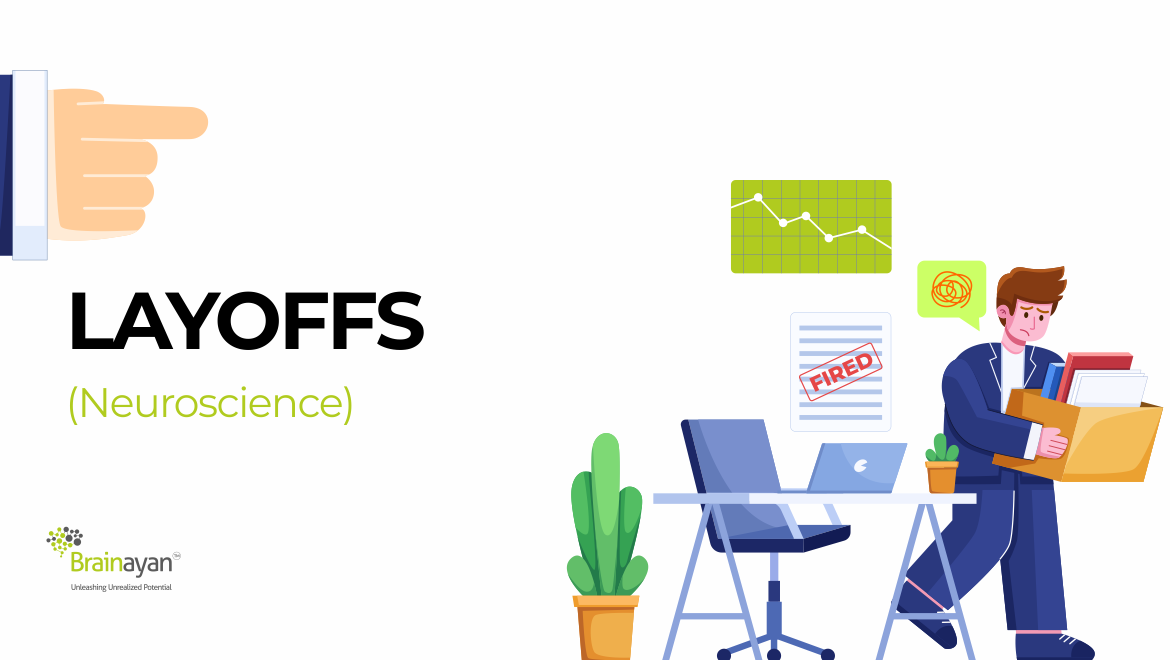“Mind Matters: Navigating Layoffs from a Neuroscience Perspective”

“Mind Matters: Navigating Layoffs from a Neuroscience Perspective”
Picture this situation: Your executive manager just informed you that you need to let go of a team member due to downsizing, even though they’ve been doing a fantastic job. Can you imagine the feelings of helplessness and powerlessness that would wash over you? The weight of the task ahead starts to sink in, and you find yourself grappling with the challenge of breaking this news.
While the amygdala activates the fight or flight response, the prefrontal cortex tries to balance it with logical thinking. Consequently, you create a mental plan to deliver the tough news to your team member with grace and dignity. Your prior learning and experience are now a beacon of hope, guiding you to ensure that this difficult process is handled with care and compassion. So, what elements would you like to include in your carefully crafted plan to make this transition as seamless as possible for yourself, as well as your team members?
- Psychological safety – In the context of layoffs, preserving psychological safety means creating an environment where team members can feel safe, supported, and respected, even during a difficult and stressful time. This involves being aware of how your own mental state can impact others. During crisis, where psychological safety might be compromised, it manifests as anxiety, stress, fear, and uncertainty. One way to promote psychological safety is to use team and trust-building techniques to release oxytocin, the “bonding hormone,” before delivering the news of the layoff. This can help create a trusting and safe environment for the discussion. You can use gestures of appreciation or physical touch like handshakes or hugs to reassure team members that they are valued. It’s important to emphasize to your team members that their layoff is not related to their performance and that their contributions have been valued. Let them know that they have been a competent and credible employee, and that the decision to lay them off was made due to organizational downsizing caused by external factors. By acknowledging their contributions and emphasizing their value to the team, you can help preserve their self-esteem and ensure that they leave with a sympathetic view of the company.
- Perspective taking and Empathy – As a manager, it’s important to acknowledge that your team members may have a different perspective during a layoff. They may feel shocked, defensive, or dejected, and it’s your responsibility to consider their feelings. To support your team members, set aside your own perspective and prioritize their feelings. Practice empathy. Put yourself in their shoes to understand their experience and actively listen to their concerns. Acknowledge and validate. Let them know that you understand how difficult the situation is and offer emotional support. Pay close attention to what they might be thinking. This will help you tailor your communication style and approach to support the team member better. By acknowledging their perspective and supporting them through this difficult time in a personalized way, you can foster a positive relationship with your team member, even amidst difficult situation like layoffs.
- Mindfulness – Mindfulness is important to have a conscious awareness of your own thoughts about the layoff situation. This can help you communicate more effectively with your team member, stay present and engaged in the conversation, and respond in a way that is both compassionate and professional.
- Relational Transparency – Relational transparency is the degree to which you and your team member are open and honest with each other about thoughts, feelings, intentions. By being open and transparent about the situation, you can help alleviate some of the stress and uncertainty that the employee may be feeling. This can also help to prevent misunderstanding and miscommunication that can lead to further conflict or hurt.
- Organisational Awareness – Organizational awareness plays a critical role in layoffs because it allows leaders to anticipate and address the potential impact that a layoff may have on the organization and its members. They can also anticipate how the layoff may affect the remaining employees and take steps to ensure that those who remain feel supported and valued. Additionally, leaders with high levels of organizational awareness are better equipped to communicate the rationale for the layoff and any changes in the organization’s strategy or direction that may have prompted it, which can help to maintain trust and alignment within the team.
Leading difficult conversations with care and preserving people’s dignity and personal and organizational integrity is a key skill we all need to step up for.
References
Schwartz, J., Thomson, J., & Kleiner, A. (2016). The neuroscience of strategic leadership. Research shows how leaders can take the high road less traveled. Strategy+ Business.
Goleman, D., & Boyatzis, R. (2008). Social intelligence and the biology of leadership. Harvard business review, 86(9), 74-81.
https://unconsciousagile.com/2021/06/14/psychological_safety_neuroscience.html
Frazier, M. L., Fainshmidt, S., Klinger, R. L., Pezeshkan, A., & Vracheva, V. (2017). Psychological safety: A meta‐analytic review and extension. Personnel psychology, 70(1), 113-165.
Di Stefano, G., Piacentino, B., & Ruvolo, G. (2017). Mentalizing in organizations: A psychodynamic model for an understanding of well-being and suffering in the work contexts. World Futures, 73(4-5), 216-223.
Limphaibool, W., Buranapin, S., Jariangprasert, N., & Chaiprasit, K. (2022). Collective Mindfulness and Organizational Resilience in Times of Crisis.
http://loveismedicine.org/the-neurobiology-of-attunement-and-empathy/
Book : Al H. Ringleb and David Rock. Handbook of NeuroLeadership. NeuroLeadership Institure. Charleston, USA, January 2014.

With a master’s in clinical psychology, Aasawari specializes in behaviour and mindset change, leveraging her understanding human behaviour to bring about personal and professional transformations. As a passionate researcher, she delves into the latest studies and findings to create insightful and evidence-based blog articles. She strives to bridge the gap between theory and practice by simplifying complex research to provide practically actionable recommendations.